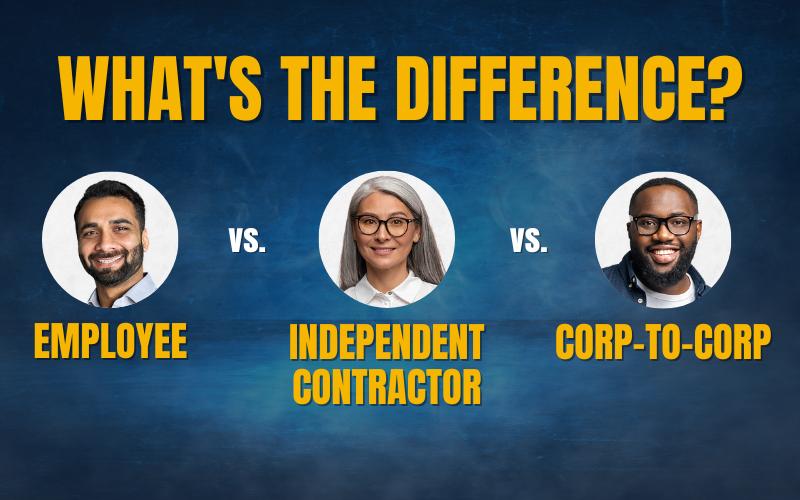There’s a global workforce of qualified talent out there — and minimal obstacles to engaging them. Instead of limiting recruiting to people who live in the U.S., employers are now searching for candidates all over the world.
Why? Some want to expand into new markets. Others require talent they can’t find stateside. Many seek lower labor costs and greater flexibility.
Whatever the motivation, it’s essential to know how American employment differs from international employment if you plan on taking your U.S. business global — especially in terms of employment laws in other countries. Here are a few key differences to keep in mind:
1. At-Will Employment
Aside from Montana, all states in the U.S. use at-will employment. This means an employer can terminate a worker without warning for any legal reason. There are exceptions to at-will employment, but employers have broad discretion to reduce their workforce.
Outside of the U.S., however, there are laws that regulate how employment can end. This includes defining the eligible cause for termination, providing termination within the mandated notice period, offering severance, etc. A failure to abide by these laws with your global workforce could result in hefty fines.
2. Mandated Costs
Mandatory costs vary wildly by country, including employer taxes, mandated pensions, benefits, bonuses, and much more. A company that has only hired U.S. workers will likely have sticker shock when it sees an employer cost rate of 50% (or more in some cases) after hiring remote employees in other countries — a far cry from an estimated employer cost of about 16% in the U.S.
Note that most countries have medical benefits either built into their employer costs or provided by the government and funded by taxes. When comparing employer costs between another country and the U.S., be sure to factor in any benefit costs your company provides to U.S. employees — as well as the statutory costs — to get an accurate comparison.
3. Annual Leave Entitlements
The U.S. doesn’t require paid vacations or holidays for its workers; companies can offer as much or as little time off as they choose. In most other countries, however, workers must receive paid annual leave and public holidays.
The amount of leave varies by country and can range anywhere from 10 days to 34 days annually. Regardless of what the employment laws in other countries explicitly require, more seasoned employees with 10-plus years of experience will expect at least one month of paid vacation to start.
4. Paid Parental Leave
Most countries outside of the U.S. must offer some level of paid parental leave for their workers, whereas the U.S. does not have federal paid leave. A few states have programs in place for paid parental leave, and the Federal Employee Paid Leave Act provides 12 weeks of compensated leave to federal workers. However, it isn’t a blanket paid benefit like in other countries.
5. Hours of Work
The U.S. doesn’t have limits on the number of hours an employee can work — as long as nonexempt employees receive overtime pay when they work more than 40 hours a week (or more than eight hours a day in some states).
Other countries, meanwhile, have varying restrictions. Some nations place hard caps on hours worked, and others provide unique compensation options for employees who work above the norm. A failure to adhere to these laws when hiring remote employees in other countries can result in fines and penalties — and a poor reputation that can make it more challenging to hire in the future.
Successfully expanding your workforce globally depends on compliance with other countries’ intricate employment laws. Partnering with a global employer of record (EOR) such as Innovative Employee Solutions (IES) can help your company avoid unnecessary and costly errors, setbacks, and noncompliance.
A global EOR understands the complexities of hiring and employing workers worldwide and can be an invaluable ally as your company expands outside the U.S. Although global employment might seem intimidating, working with the right partner to guide your expectations can help transform your business for the better.
IES enables companies to hire anytime and anywhere in more than 150 countries. Do you want more insights into hiring remote employees in other countries? Download the IES whitepaper “Take Your Business Global, Without the Hassle” for information on trends in the global workspace and how working with an employer of record can help you reach talented international workers while following compliant employment laws in other countries.
Written by: Sara Jensen,Vice President of Business Development at IES
Sara Jensen is the vice president of business development at Innovative Employee Solutions (IES), leading global Employer of Record in more than 150 countries that specializes in contingent workforce solutions such as outsourced payrolling, independent contractor compliance, and contractor management services. Founded in 1974, IES has grown into one of San Diego’s largest women-owned businesses and has been named one of the city’s “Best Places to Work” for 10 years in a row.







